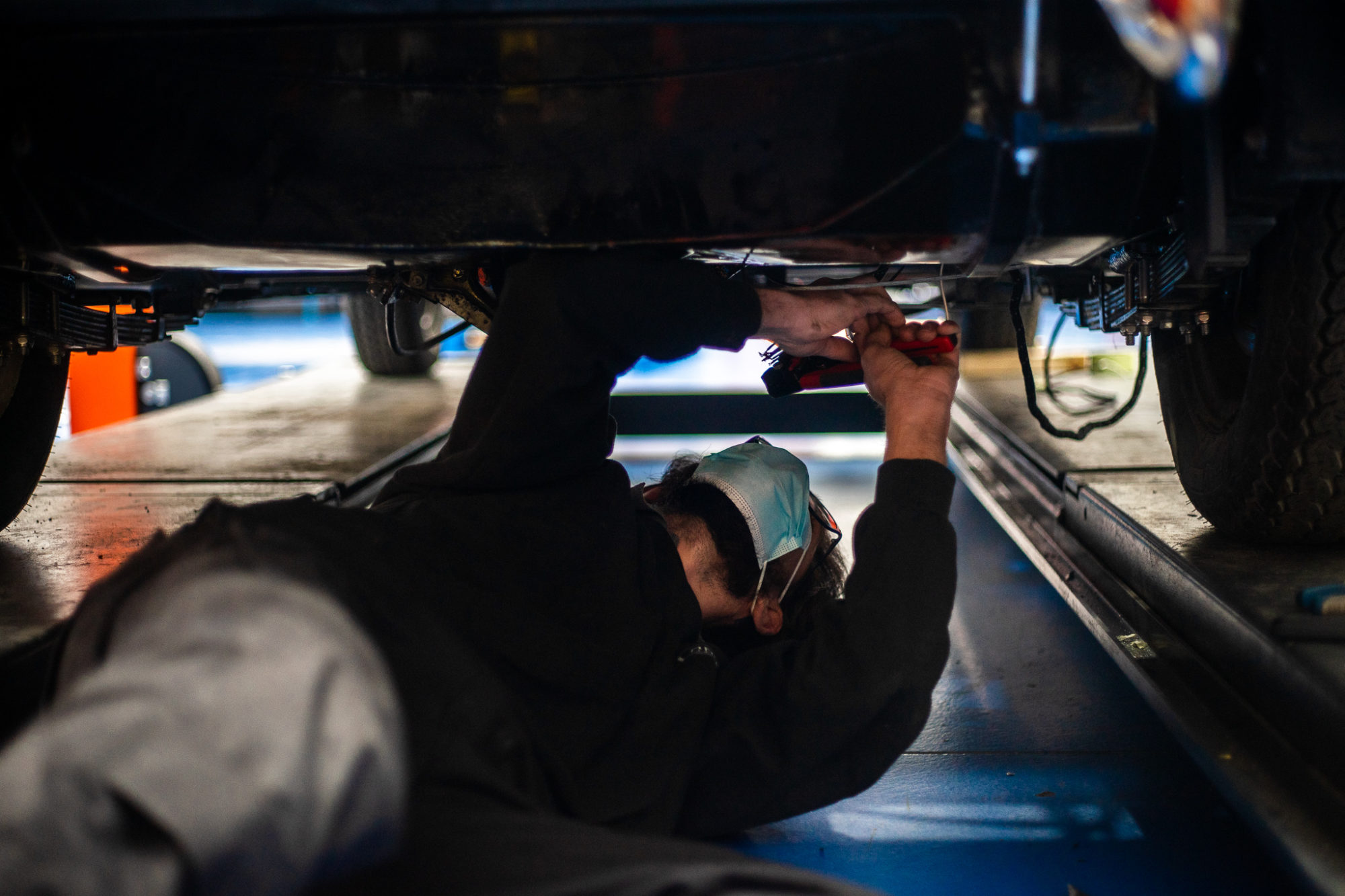MOT

“But classic cars don’t need a MOT I hear you cry…”
As of May 20, 2018, nearly all cars that were built more than 40 years ago are exempt from the annual MOT roadworthiness test, unless owners voluntarily elect to have their vehicle checked. Previously, only cars first registered before 1960 were exempt from needing an MOT.
The change also means that MOTs are brought into line with road tax (VED), where classic cars 40 years and over are also exempt.
Here at Bridge Classic Cars we believe that all vehicles should undergo an MOT quality check and our technician Peter is a fully qualified MOT tester with over 20 years experience.
- MOT testing.
- Vehicle Repair.
- Servicing.
- Tyres.
- Brakes.
- Air-Conditioning.
- Exhausts.
- Batteries.
- Vehicle Safety Inspections.
The Ministry of Transport, most commonly known as the MOT is an annual check required to be carried out on most vehicles in the UK over three years old.
All vehicles are tested for safety, roadworthiness and exhaust emissions and the criteria in which all qualified testers and testing stations have to adhere to is set out by the DVSA (Driver and Vehicle Standards Agency).
So if your vehicle is 3 years old or more, you are required by law to have an MOT.
All MOT tests, retests and contingency tests must be conducted within authorised vehicle testing stations (VTSs) by nominated testers (NTs), approved to test the class of vehicle by the Driver and Vehicle Standards Agency (DVSA).
During the MOT test the nominated tester (NT), a person accredited by the DVSA to assess your vehicle, will conduct a comprehensive series of checks around the vehicle. The MOT test ensures that the necessary checks occur at least once a year to see that they comply with key roadworthiness and environmental requirements.
However, it is not the same as having your vehicle serviced. The test relates only to the condition of the testable items at the time of the test. It should not be regarded as evidence of the condition of the items tested at any other time nor should it be taken as evidence of the general mechanical condition of the vehicle.
The result of each and every check carried in the UK is digitally recorded on a central database. If the vehicle passes, the driver is issued with a VT20 ‘pass’ certificate. An explanation of all advisories, failures and refusals will be given by a member of our experienced and qualified team. If the vehicle fails to meet the required standards set out by the DVSA then a VT30 ‘failure’ document is issued.
The acceptable standards are as recorded in the current DVSA Vehicle Inspection Manual.
It is your responsibility to ensure your vehicle is examined every 12 months. You can find the expiry date of your MOT on your existing MOT test certificate or online.
You can have your vehicle MOT tested up to 28 days in advance. The expiry date on your new MOT is 12 months from the expiry of your old one rather than 12 months from the day you took the test, so as long as your MOT test is due in the next 28 days, you won’t lose any days for having your vehicle tested early.
Without a current MOT certificate, you will be unable to drive your vehicle lawfully or renew your road tax. The penalty for not having an up to date MOT certificate could be a fine. Also if the vehicle is involved in an accident you will most likely be uninsured.
Recent computerisation of the MOT testing system by DVSA means police and mobile camera units can now check remotely to see if your vehicle has a current MOT.



HISTORY OF THE MOT TEST
Compulsory vehicle testing was introduced in Great Britain in 1960 when the Motor Vehicles (Tests) Regulations 1960 came into operation.
The test was initially confined to vehicles that were ten years old or more, but the testable age was progressively reduced to three years by April 1967.
On 1 January 1983 the testable age for ambulances, taxis and vehicles with more than eight passenger seats, excluding the driver’s was reduced to one year.
Initially the test – which became known as the ‘MOT’ test – was limited to braking, steering and lighting equipment. New items and different standards have been introduced from time to time, including:
- 1968 – a tyre check
- 1969 – a check for the presence of legally required seat belts
- 1977 – checks of windscreen wipers and washers, direction indicators, stoplights, horns, exhaust system and condition of the body structure and chassis together with a more detailed check on seat belts
- 1991 – checks of the exhaust emissions for petrol engine vehicles, together with checks on the anti-lock braking system, rear wheel bearings, rear wheel steering (where appropriate) and rear seat belts
- 1992 – a stricter tyre tread depth requirement for most vehicles
- 1993 – checks of the rear fog, hazard-warning and number-plate lamps; and of the driver’s view of the road, body condition, body security, load security, doors, registration plates, fuel system and mirrors
- 1994 – a check of emissions for diesel engine vehicles, after minor procedural changes were put into place
- 1996 – new and stricter emissions checks for spark ignition engine vehicles
- 1998 – seat belt installation check introduced for minibuses and buses
- 2005 – introduction of a computerised administration system for issuing non-secure test certificates
- 2012 – checks of secondary restraint systems, battery and wiring, ESC, speedometers and steering locks.
Note: This lists the more significant changes to test content and standards. It is not a full list of all changes.

